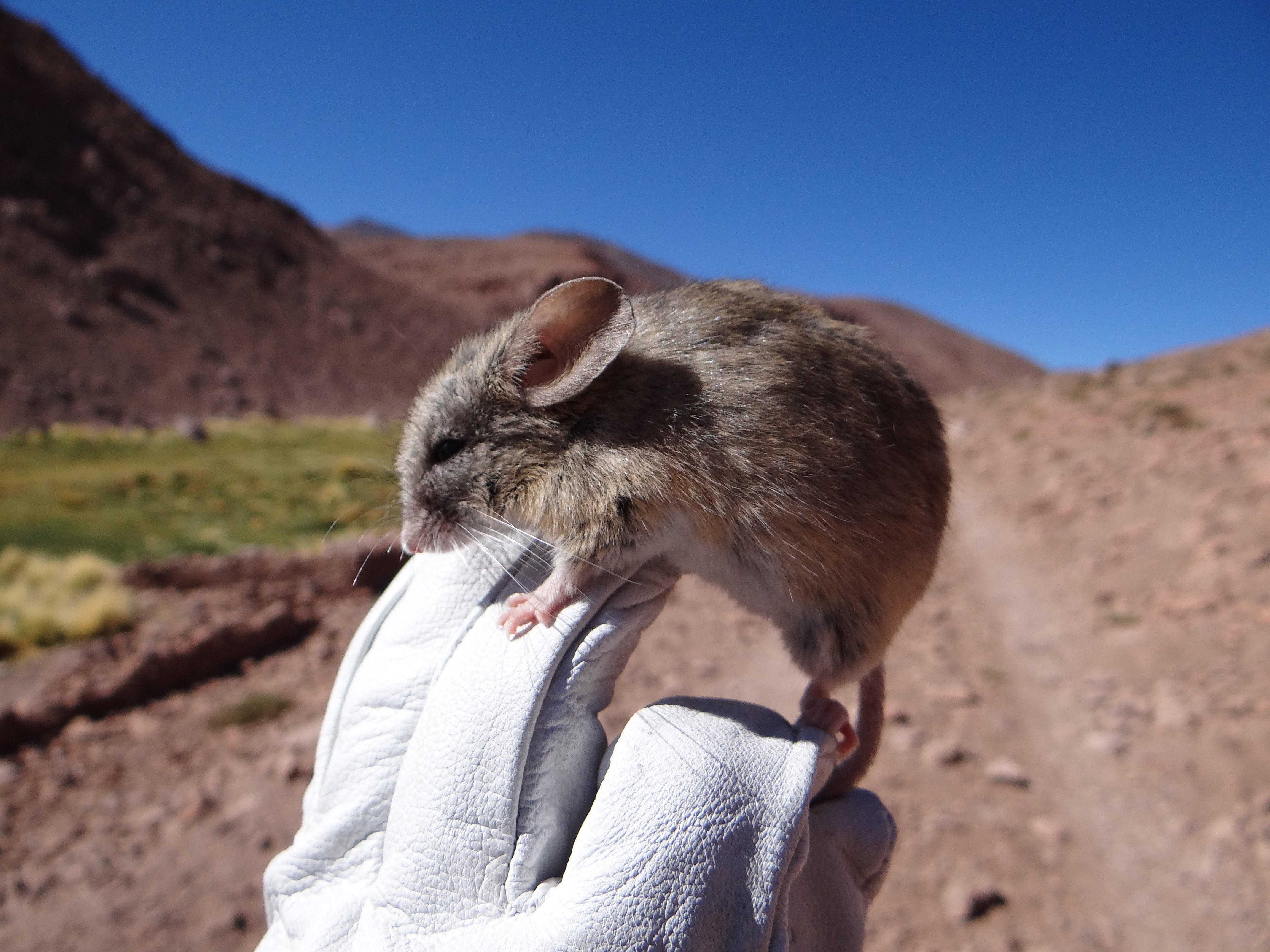
Tiny mice found mummified on the peaks of Andean volcanoes had made a home in the Mars-like environment, new evidence suggests—as impossible as the feat would seem.
High in the Andes, tucked below the knee of South America’s western coast, is the Atacama Desert. One of the driest places on Earth, the regions is such a brutal landscape that NASA astrobiologists visit it to understand how they might search for microscopic life on Mars. Scientists had expected life at the summits to be limited to microbes, but it turns out that isn’t the case. Instead a new genetic analysis published on October 23 in Current Biology suggests that mice found living on the peaks aren’t outliers but representatives of a fairly persistent population.
“For miles around, it’s this really austere, Martian-like landscape, a hostile environment, and then the summits of these volcanoes are even more hostile,” says Jay Storz, an evolutionary biologist at the University of Nebraska–Lincoln and co-author of the new research. “When you experience these environments firsthand on the summits of these volcanoes, it’s just mind-boggling that [mammals] could be living up there.”
That’s why he and one of his colleagues were shocked when, near the top of the Andean volcano Llullaillaco, they stumbled on a naturally mummified leaf-eared mouse (Phyllotis vaccarum). Archaeologists had reported similarly preserved mice from Incan sites on the peaks, but they had assumed the rodents were either hitchhikers or offerings brought by humans during excursions to these locations. Storz’s find wasn’t near any known Incan site, so he decided to look around the region more closely. “I figured, well, where there’s one dead mouse, maybe there are more,” he says.
The strategy paid off. In 2020 Storz and his colleagues reported capturing a leaf-eared mouse, this one alive, at 6,205 meters (nearly four miles) above sea level. At that altitude, vegetation is scarce, winds are fierce, and the air contains half as much oxygen as it does at sea level. The mouse immediately claimed the title of the world’s highest-dwelling mammal known to science. “To trap a live mouse in an environment like that was just super, super shocking,” Storz says of the find.
To understand whether the high-altitude mice were full-time mountain dwellers or merely peak tourists, Storz and his colleagues studied the live-caught mouse, along with 13 mummified corpses of the same species. First, they used carbon dating to determine that all the mice had lived no more than 350 years ago and that many dated to more recently than that—meaning their presence couldn’t possibly be related to the Inca Empire, whose last leader was killed by Spaniards in 1572.
Then the scientists sequenced the genomes of the high-altitude mice and compared them to the genomes of leaf-eared mice found at lower elevations. That analysis suggested that these two groups of mice were closely related and still members of the same species. The researchers also determined that the summit mice were split evenly between males and females and that two pairs of mice found on one peak were either siblings or a parent and a pup. Both of the latter findings suggested that the mice have a real foothold in the Andes’ summits, the scientists say.
“The authors provide more than enough evidence to assume that there are populations of the mouse Phyllotis vaccarum at more than 6,000 meters in the Andes,” says Pablo Teta, a curator of mammals at the Bernardino Rivadavia Natural Sciences Argentine Museum, who was not involved in the new research but has studied rodents in the Andes. “This situation raises enormous questions about how these animals have managed to adapt to such altitude, in places where [it is hard] to find food and hostile climatic conditions prevail.” In particular, he notes that the existence of the same mice at lower altitudes suggests “enormous plasticity” that will be intriguing to understand.
Storz and his colleagues are continuing to visit Andean peaks, where they have surveyed 21 different mountains from base to summit for mammals to better understand where these creatures can survive. In addition, the scientists are working with leaf-eared mice collected from both lower and extreme elevations to understand how the rodents are adapting to cope with the frigid temperatures and scarce oxygen.
Eduardo Palma, a zoologist at the Pontifical Catholic University of Chile, who was not involved in the new research, says he’s not surprised by the findings. “It seems like they have a very well adapted ecophysiological machinery for the survival in high elevations,” he says, noting that related species of rodents are common throughout the region and that scientists have noticed that they’re particularly good at conserving water.
“Animals are clearly capable of living in environments that we previously assumed to be completely uninhabitable,” Storz says. “We’ve really underestimated the physiological limits of vertebrate life.”
